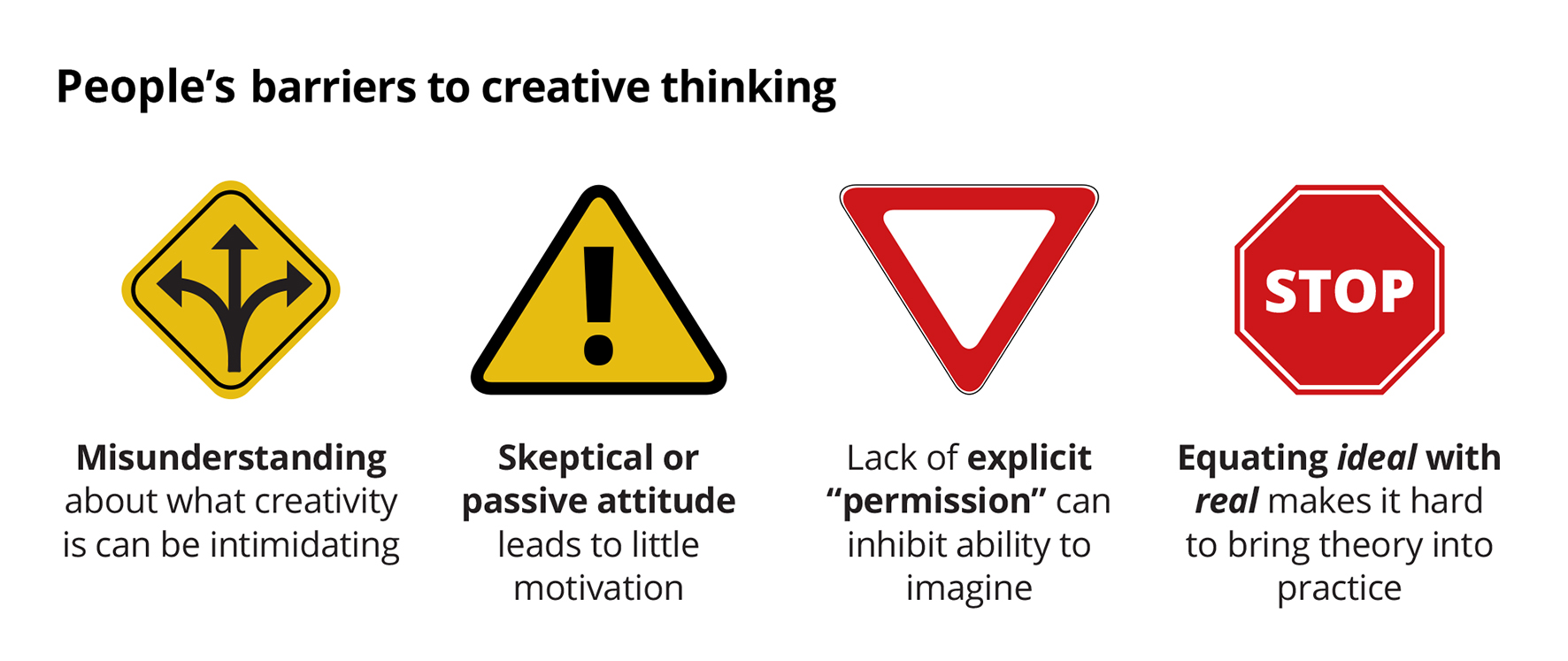
Creativity is often taught and greatly valued in business schools and organizational contexts. Multiple workshops, courses and programs equip future leaders with tools and strategies to innovate, run brainstorming sessions, and make the most of creativity. However, it is rare to see a truly unique, never-seen-before idea or product. The gap between theory and practice persists. The fear that artificial intelligence generates in regards to job security, among others, clearly illustrates this gap. Rather than panic, why don’t we imagine ways in which we can leverage our uniqueness or reframe our understanding of jobs? This also evidences our lack of social imagination and the fact that we don’t practice creative thinking at all levels of society.
Most of the current views of creativity are based on a limited definition of creativity that prevents many from appreciating their own potential. Creativity is a powerful cognitive ability that not only can help become a successful entrepreneur or leader of a multimillion dollar company, “creativity can be about anything”””it is a way of life. Rather than teaching creativity only in the context of business, design, or art, we first should focus on the individual and raise awareness about individual creativity””as described by Teresa Amabile. This is creativity at the personal level and that we use every day to deal with different aspects of our life. That is, our innate ability to think differently about situations, relationships, activities, and find ways forward in everything we do.
Individual creativity manifests in everything we do. For Ruth Richards, one of the pioneers of everyday creativity, we can foster individual creativity by adopting a flexible and open mindset and attitude towards, where we see each moment as opportunity for expressions of originality and meaningfulness. Intrinsic motivation and proactive attitude as well as being present are key components for success.
Nurturing creative societies
“Health for self, health for the world” writes Ruth Richards in her book Everyday Creativity and the Healthy Mind (2018:1). These words allude the the significant benefits that nurturing and embracing individual creativity and imagination can have for society, That is, reconnecting with our personal creativity is like building a solid foundation for a house””society.
The paradox is that creativity can be challenging for many because it questions the beliefs and societal constructs that we have been exposed to since we were born. To embrace creativity, we must be willing to break with the world as we know it and to conceive the idea of a different reality, a different way of doing things, and a different way of thinking about everyday life. Understanding the full potential of creativity and why it is so hard to break with our dualist thinking (right-wrong, better-worst, good-bad) is essential. Equally important is to self-reflect whether we really believe in creativity or we internally question the need for wild ideas, judge them or describe them as childish.
We need a creative society and collective imagination to tackle current and future global challenges, and improve people’s wellbeing and happiness. But we must start with the individual. Equip them with the tools and confidence to embrace who they are and believe in their own ideas, so they aren’t afraid to think differently and ask questions.
Only when we are able to put down our own personal barriers and mental blocks””and allow ourselves to imagine things that do not exist without judging them””is that we are able to reconnect with our creative selves. This is a transformative journey: once you get to the other side, there is no way back as you will unleash your superpower.
Leave a Reply